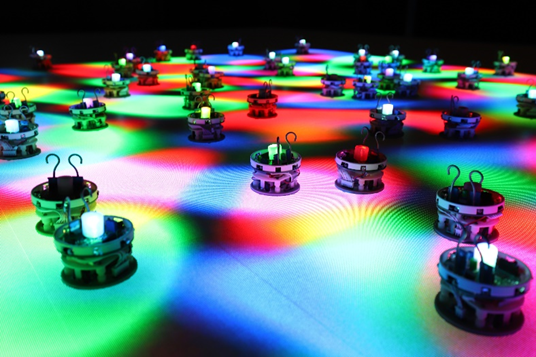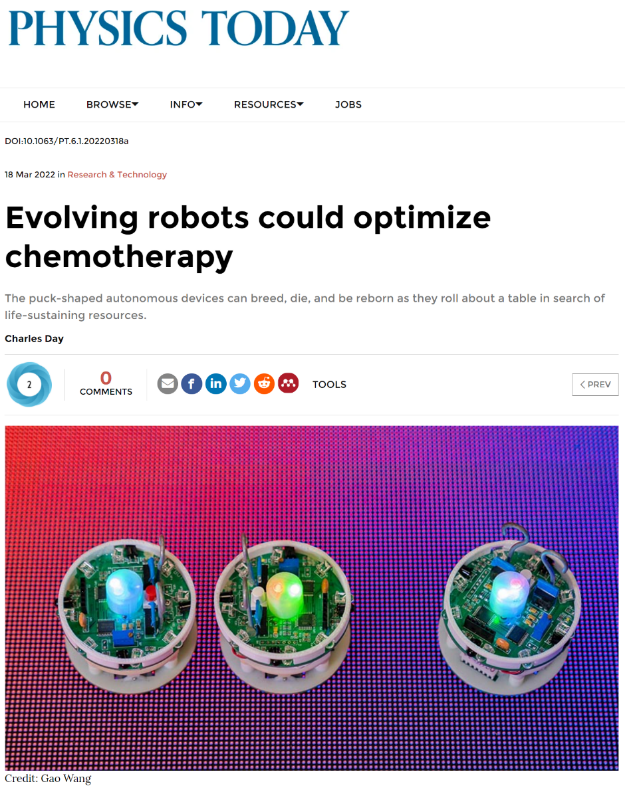In March 2022, Liyu Liu's group in the School of Physics at Chongqing University published the paper "Robots as Models of Evolving Systems". The paper was published in PNAS (Proceedings of the National Academy of Sciences of the United States of America) with Chongqing University as the first author and correspondent, and was featured in Physics Today. Wang Gao, a PhD student in the School of Physics, was the first author and Prof. Liyu Liu was the corresponding author.

In this research work, robots are endowed with unique mechanisms of genetics, mutation and natural selection, thus introducing the most important elements of biological evolutionary systems into the robotic population. Combined with a dynamic programmable optical environment, the robotic population is able to perceive its environment and change it, thus inducing complex population adaptive behavior.
Each robot has three binary sets of "genes", which are dominant and recessive. The trait corresponding to the robot is the sensitivity of the robot to the consumption of light resources. Robots with different combinations of dominant and recessive traits consume different types of food resources in the environment. When the amount of resources needed by the robot is not met, the individual is under increased pressure to survive, leading to higher mutation rates and even death due to food depletion. The surviving robots will pass half of their genes to each other through an infrared device when they encounter a dead robot shell, so when two different robots pass half of their genome to a dead robot, the dead robot will be reborn. The resurrected robot will have half of the genome from each parent, thus corresponding to the biological sexual reproduction process.
When a population with such biological characteristics is in a white homogeneous resource field, the survival environment of the population remains very dynamic and complex due to the diversity of individual traits, and the mutation rate of individuals is an important factor for the survival of the population. Quantitative experimental results show that the population can survive at either low or high mutation rates, while at moderate mutation rates can make the survival of the population difficult. When the population is in an environment where the resources are homogeneous but the color changes periodically, the conclusions for population survival are similar to those in a white homogeneous field, but will be more sensitive to changes in the mutation rate of genes. In contrast, when the population is in an environment where resources are constantly changing randomly in both time and space, the high mutation rate of the population no longer allows the population to survive, but instead allows the population to gradually die out. This work uses a physical robotic system instead of computer simulations to study the properties of biological evolutionary systems, and finds conclusions that differ from the results of highly idealized computer simulations.
Charles Day, editor-in-chief of Physics Today, a journal of the American Institute of Physics (AIP), wrote a special article discussing the cluster robot system and the inspiration for biology. The report suggests that the study's findings are extremely enlightening for therapies in cancer chemotherapy approaches, namely that random doses of multiple drugs have the potential to suppress cancer cells with high mutation rates better than time-dosing chemotherapy doses.

This work was supported by the No. 11974066 and No. 12174041 project of the National Natural Science Foundation of China.
Link to original article: https://doi.org/10.1073/pnas.2120019119
Link to report: https://physicstoday.scitation.org/do/10.1063/PT.6.1.20220318a/full/